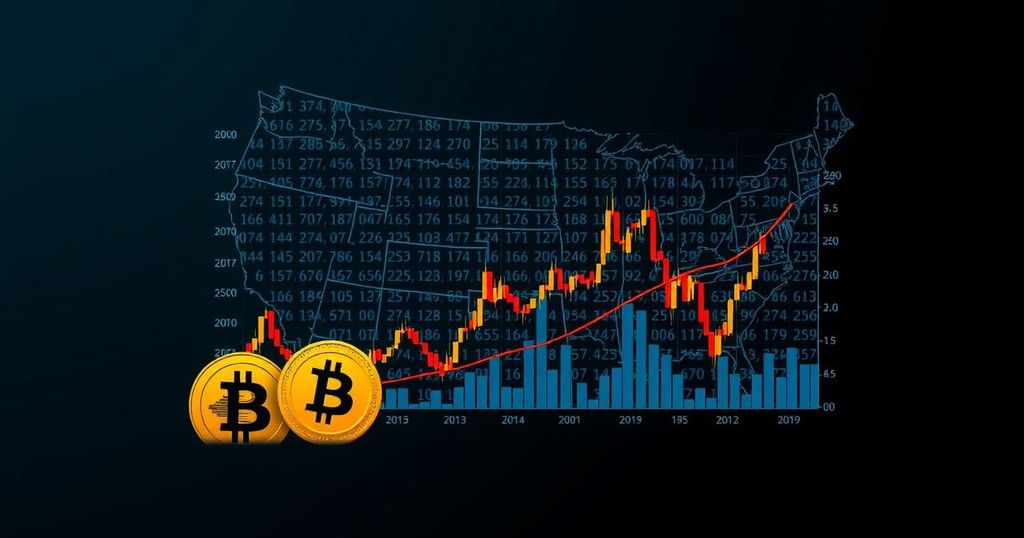US Stock Market Indicates Recession: What Lies Ahead for Bitcoin’s Price?
**US Stock Market Signals Recession: Implications for Bitcoin Price**
The cryptocurrency market, particularly Bitcoin, is currently confronted with significant challenges as it trades below the $60,000 mark. Recent developments within the US stock market suggest potential recession warnings reminiscent of the financial landscape before the Great Recession of 2007-2009. When historical patterns resurface, the repercussions for Bitcoin (BTC) could be dire for investors who are optimistic about a persistent bullish trend.
In August, Bitcoin experienced a substantial decline, with a reported crash of 7% last week, bringing its value to a pivotal psychological threshold. Concurrently, signs of market exhaustion in the US stock sector could heavily influence Bitcoin, alongside broader financial markets.
### Correlation Between the Stock Market and Bitcoin
Despite Bitcoin’s classification as an uncorrelated asset, there exists a notable correlation with the movements of the US stock markets and liquidity cycles. The cryptocurrency’s price appears highly sensitive to macroeconomic policies implemented in the West. It raises the question: should the US stock market enter into a recession, what would be the implications for Bitcoin’s valuation and the wider cryptocurrency market?
This discourse highlights two specific indicators echoing the events leading up to the 2007-2009 recession. Firstly, the S&P 500 Index exhibited two notable signals that foreshadowed a market reversal during the third quarter of 2007: a rapid v-shaped recovery and the occurrence of bearish divergences. As depicted in relevant technical analysis, just prior to the Federal Reserve’s interest rate decision on September 18, 2007, the S&P 500 exhibited a v-shaped recovery that created an illusion of strength preceding a financial collapse. Remarkably, a similar scenario is unfolding as the Fed prepares for its upcoming decision on interest rates. Additionally, the S&P 500 experienced a notable v-shaped recovery from August 5 to August 30, evoking concerns among investors.
Technical analysis further emphasizes the formation of multiple bearish divergences on the Relative Strength Index (RSI) and the Awesome Oscillator (AO). This formation occurs when a rising price trend is not substantiated by increasing positive momentum, as indicated by lower highs in momentum assessments. The emergence of these signals has historically preceded significant market corrections, intensifying concerns that investors could soon face serious challenges not only pertaining to the US stock market but also regarding Bitcoin’s valuation.
### Factors Suggesting a Likely Bitcoin Crash
Currently, Bitcoin is consolidating below its all-time high reached in 2021 for an extended period of six months. Generally, one might perceive such consolidation beneath a key price barrier as bullish; however, the RSI’s position near the mean level of 50, after a descent from previously overbought conditions, signifies a bearish projection. Moreover, the AO has fallen below the mean threshold of 0, indicating a momentum shift favoring bearish market participants. If this trajectory persists, the likelihood of a Bitcoin crash increases significantly.
Furthermore, the recent performance of the S&P 500 now echoes the market conditions felt in early September 2007, previously indicative of an impending recession. Should history repeat itself, it could evoke panic selling, adversely affecting Bitcoin’s market price. The scheduled Non-Farm Payroll report on September 6, alongside the Federal Reserve’s interest rate decision set for September 18, will play a crucial role in shaping the future landscape of financial markets. A signal of an economic downturn akin to early August could result in substantial market reactions, with the S&P 500 plunging nearly 10%, while Bitcoin previously experienced a 30% crash. Investors would be wise to brace for potential further corrections.
Key support levels for Bitcoin price predictions include weekly support at $43,793 and $41,349, as well as monthly support levels at $30,486 and $27,223. Conversely, should the Non-Farm Payroll data portray a robust jobs market and the Federal Reserve opt to cut interest rates on September 18, a bullish resurgence in sentiment could transpire. In such a scenario, Bitcoin could strive to reclaim the $70,000 psychological milestone, and possibly even surpass its current all-time high, setting new targets above $80,000.
In conclusion, the confluence of indicators suggesting a market downturn, both in traditional financial spheres and within the cryptocurrency domain, necessitates a cautious approach by investors. Relying on historical parallels could provide valuable insights into navigating the complexities of current market dynamics.








Post Comment